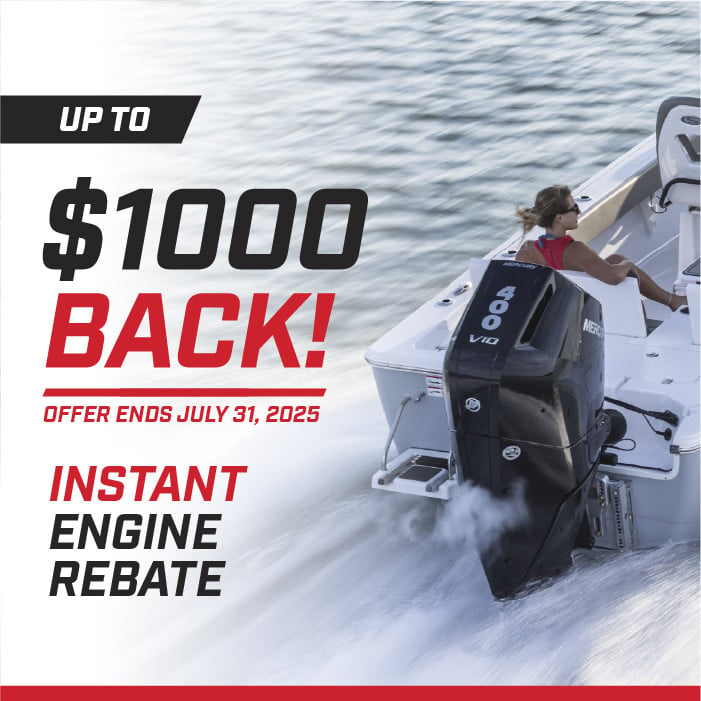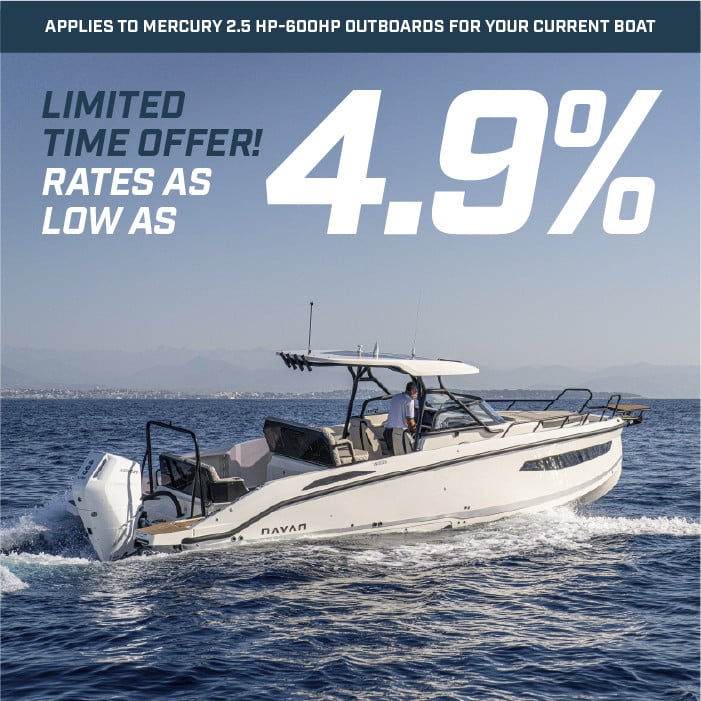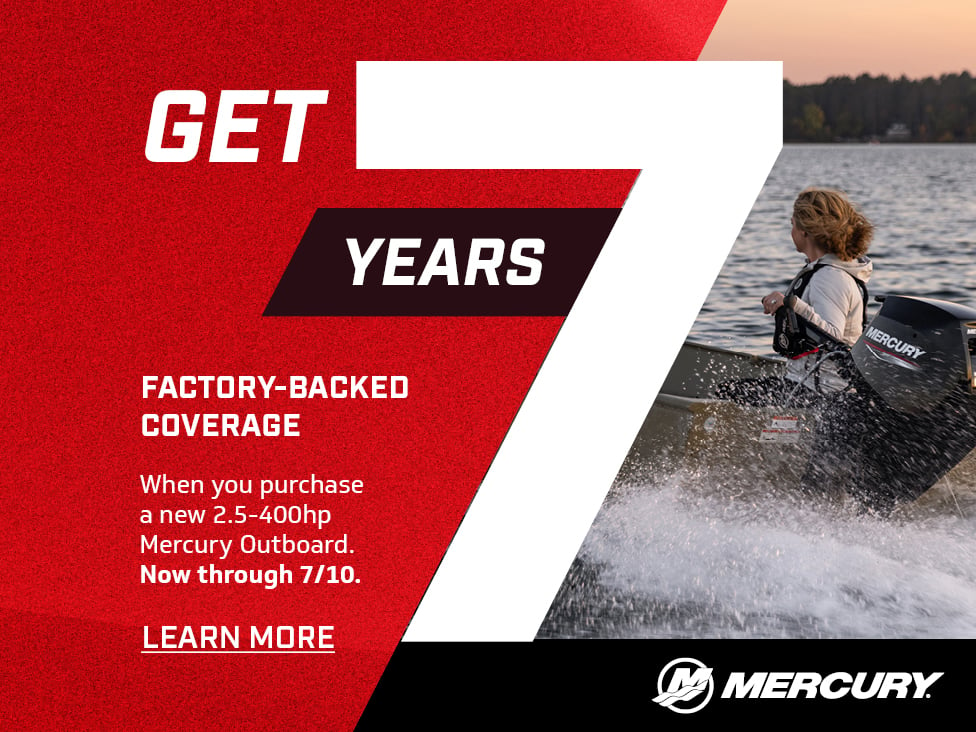Mercury Marine continues to elevate electric outboard performance with the Avator™ 75e and 110e models. Showcased for the first time at CES 2024 and slated to be available later this year, they’re our most powerful electric outboards yet, offering boaters the capability to propel aluminum fishing boats, compact pontoons and even small fiberglass runabouts with an efficient, all-electric system.
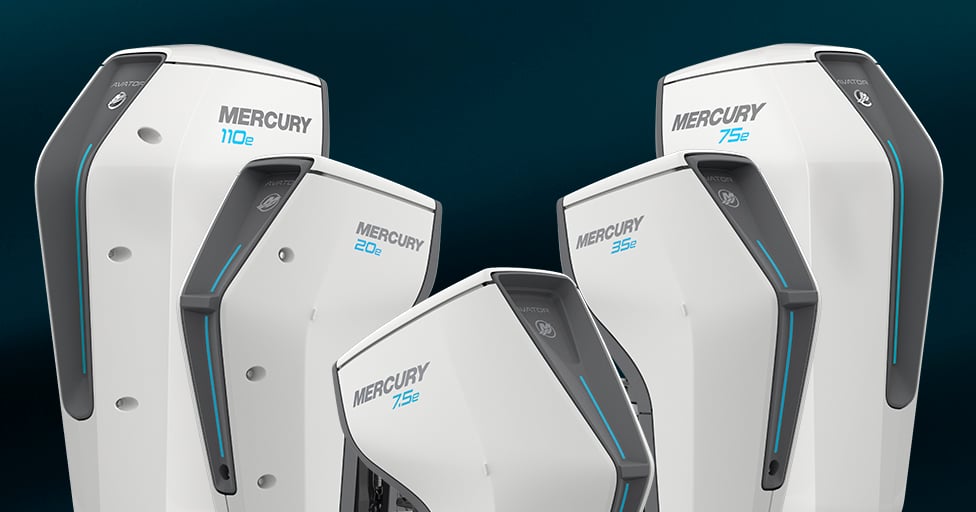
Amplify Your Adventure
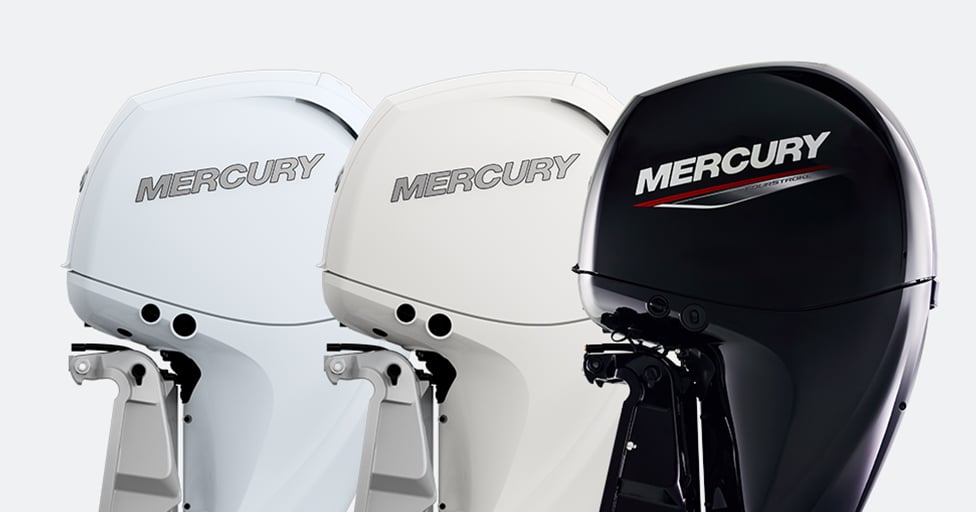
Welcome to the Family
You now have even more ways to personalize your performance in our mid-range outboard lineup. Introducing new Warm Fusion White and Cold Fusion White 150hp FourStroke outboards and an all-new 105hp Jet outboard.
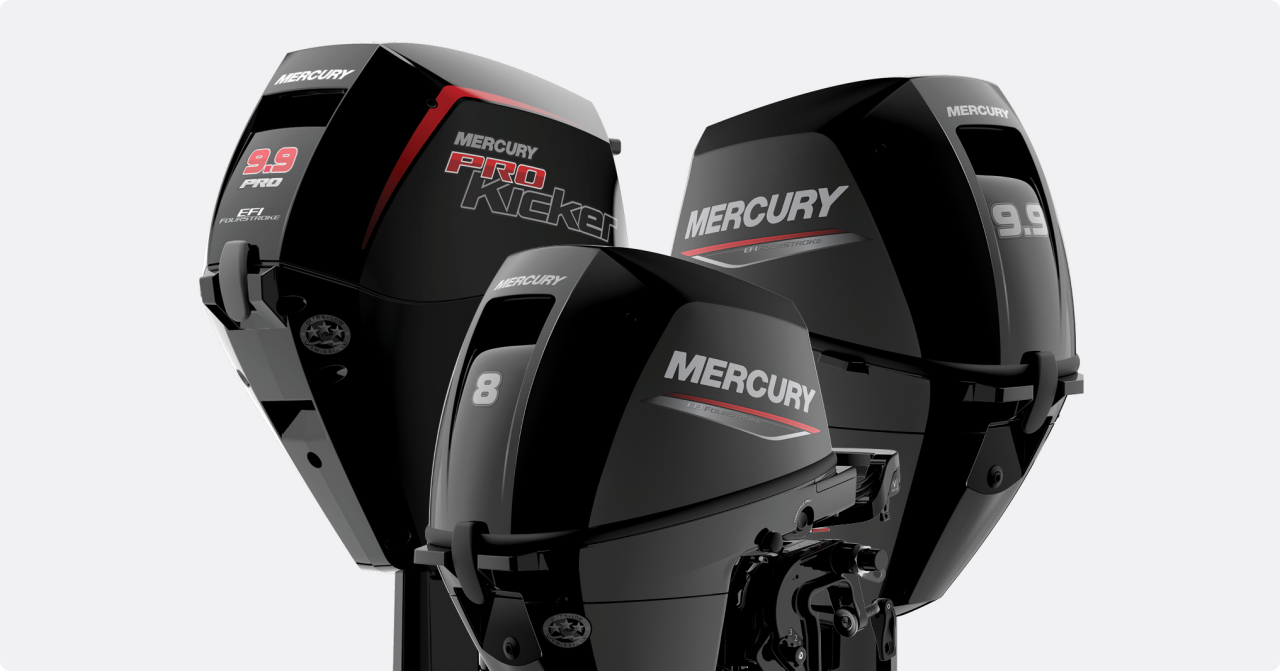
New 8 and 9.9HP EFI outboards
Chase big fish or great adventures with the all-new Mercury 8 and 9.9 HP outboard motors, now featuring easy-start EFI performance. Choose a 9.9 HP ProKicker™ for precise trolling speed adjustments, and 8 and 9.9 HP FourStroke outboard motors for exploring with small boats.
Maintenance Made Easy
Whether you’re a confident do-it-yourselfer or rely on a Mercury dealer for your marine maintenance needs, we make it easy to find the information you need to get the job done right.
Get Mercury News, Tips and More
SmartCraft®The Power to Do More
Mercury SmartCraft® digital technologies refine the entire boating experience to ensure every day on the water reaches its full potential. From intelligent gauges and displays to advanced systems that make boat control easy, SmartCraft gives you the power to do more with your time on the water.
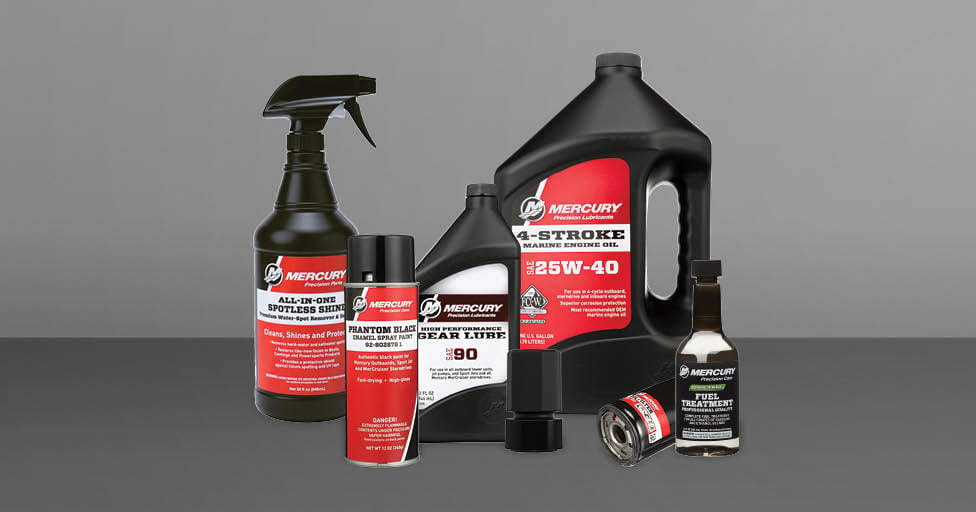
Is your boat ready for the off season?
With new boating adventures on the horizon, your Mercury Authorized Dealer has the genuine parts and expert service you need to make sure you aren’t left on the dock when the water calls. Schedule your service now.
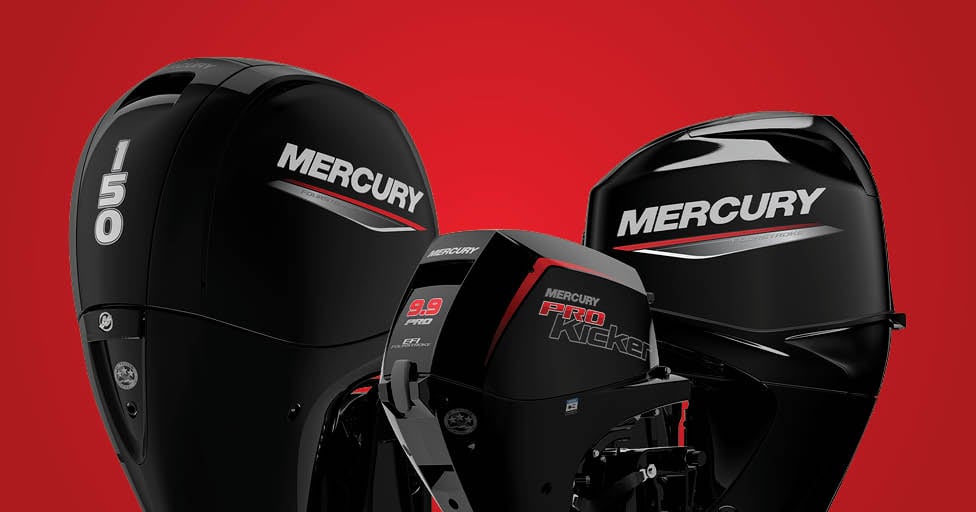
Repower
Your boat still has a lot of memories left to make. Give it the power it needs to continue propelling you on your adventures with a new Mercury outboard.
Performance Data
Mercury engines are designed and tested to provide the highest performance and most enjoyable boating experience possible. Boat House Bulletins provide detailed performance information about Mercury engines on a wide range of boat types and brands, straight from a source you can trust: Mercury Marine.
Warranty & Product Protection
Mercury makes world-class marine products backed by world-class warranties. You can also add a Mercury Product Protection (MPP) extended service contract that covers certain expenses caused by defects in materials and workmanship after the Mercury Limited Warranty expires.
Sustainability Report
In achieving our current sustainability goals, and in planning for more accomplishments in the future, we will continue to lead the way as we engage with partners and the communities where we do business. With ambitious sustainability targets to hit in 2025 and 2030, Mercury continues to push forward with a commitment to achieving our vision of sustainability and leading by example.




